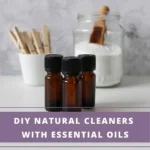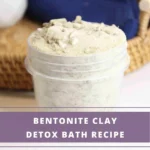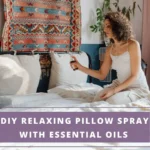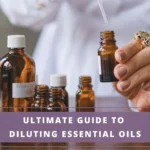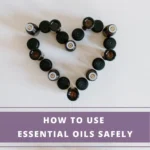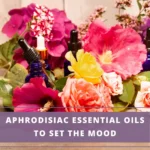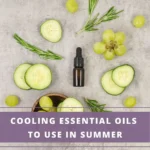As an Amazon Associate I earn from qualifying purchases. See Full Disclosure Here
When you start with aromatherapy, one of the first things you must learn is how to store essential oils correctly to maximize their shelf life.
Essential oils are volatile compounds. When stored incorrectly, the composition of the oil changes, destroying its therapeutic properties. This can happen surprisingly quickly.
When stored correctly, your essential oils will last longer and all of their beneficial properties will remain intact.
Considering you will have paid quite a bit for the oil, you want to make sure that you get the goodness out of every last drop. Knowing how to store essential oils correctly will help you do that.
As a rule of thumb, essential oils should be stored in a cool, dark place to prevent exposure to sunlight. Sunlight or any bright light can break down the oil and impact its efficacy. That’s just the absolute basic principle though. There’s much more of course and the more you learn about how to store your essential oils, the lower the odds of them getting spoiled.
Whether you use essential oils in your diffuser or for making perfumes or body care products, knowing how to store your essential oils properly is crucial.
3 Principles of Essential Oil Storage
Essential oil storage revolves around three basic principles:
1. Essential oils must be kept out of direct sunlight. Exposure to direct sunlight changes the chemical composition of essential oils and destroys their properties.
2. Bottles caps must be tightly closed when not in use. Exposure to oxygen results in oxidation of the oils, which also changes their chemical composition and their therapeutic properties.
3. Bottles must be stored at cool temperatures. High temperatures destroy the delicate components of the oil. Essential oils last longest while remaining true to form when stored at constant temperatures, preferably room temperature.
Here’s a detailed guideline on how to store essential oils correctly.
10 Tips For Storing Essential Oils Correctly
 1. Always Store Essential Oils in Dark-Colored Glass Bottles
1. Always Store Essential Oils in Dark-Colored Glass Bottles
The dark-colored glass bottles that your essential oils come in are not just for decorative purposes. Sure, they look good but more than that, these little bottles are designed specifically to preserve the properties of their contents.
Bottles that are used to store essential oils need to meet two very specific requirements:
- They must be made of glass
- The glass must be dark colored
Essential oils are highly concentrated. If put in plastic, rubber, or metal containers, the oil reacts with these materials, decomposing the container and ruining the oil.
Glass is the only material impervious to these potent oils, which is why you’ll find that essential oils are only sold in tiny glass bottles.
Why dark-colored bottles? Dark-colored bottles reduce the amount of light that comes in contact with essential oils. UV light can damage essential oils and alter their properties and benefits. When you buy essential oils from a reputed brand, you will always get them in dark amber or dark cobalt glass bottles.
It’s best to keep the oils in their original containers. If you’re making your own blends, make sure to store them in dark-colored glass bottles to preserve the aroma and the properties of the blend.
You can find a wide assortment of dark-colored glass essential oil bottles in various sizes and configurations to suit different purposes:
Simple Glass Bottles with Screw-On Lids – These are great for storing homemade diffuser blends or synergy blends
Glass Roll-On Bottles – These are super convenient for making perfumes and other topic blends that you can carry along anywhere you go.
Glass Spray Bottles – Use these for your homemade room sprays or household cleaners.
2. Place Bottles in a Cool, Dry Place
Once you have the essential oils in the right bottle, you need to make sure they are never left out in the sun. Although the dark-colored glass cuts down the amount of light that reaches the oil, it still helps to store them away in a cool, dark place. Think of it as an additional protective layer.
Instead of leaving your essential oil bottles out in the bathroom or on a window sill, put them inside the cabinet. If your kitchen or bathroom has a window and the sun can get in, place the bottles in a cupboard where it is dark, cool and dry.
Consistent temperature is just as important. As with direct sunlight, fluctuating temperatures also affect phyto-effects adversely, changing their composition along with their features and benefits.
3. Close Bottle Lids Tightly When Not In Use
When you are using a particular essential oil frequently, it may seem easier to just leave the bottle opened to save you the trouble the next time you want to use it. Don’t be tempted to do this.
When you leave the bottle open the contents get exposed to atmospheric oxygen and they get oxidized. Oil that is oxidized does not offer the healing or therapeutic benefits of the original version. In some cases, the oxidized may even have an adverse effect.
To prevent oxidation, close the bottle immediately after you have poured the 1-2 drops into the diffuser or in the bath.
4. Do Not Use the Dropper as a Bottle Cover
Droppers have a rubber cap at one end that helps to squeeze the essential oil out one drop at a time. If left on the bottle as a cover, the oil from the bottle will eventually break down the rubber from the cap, ruining both the oil and the dropper.
If you know you are not going to be using a particular oil for an extended period of time, use the original screw-on lid that came with that bottle. This keeps your oil from evaporating.
5. Labels Essential Oil Bottles Correctly
Correct usage is crucial to avoid any accidental disaster. To avoid using the wrong oil by mistake, always label every bottle with the name of the oil it contains.
If it contains a blend, write down the name of each oil in the blend.
Protect your bottle labels with clear tape so that the print on the label does not smear and the information is clearly readable.
7. Mark Expiry Dates Clearly
Writing the expiry dates clearly on the bottle label will ensure that you do not accidentally use oil that has expired as this can create other problems. Marking the date on the bottle as soon as you buy it will take a minute and it can save you a whole lot of heartache later.
Some essential oils can last up to 3 years and should always be stored in dark-colored glass containers. Most oils will last at least 1 year, except for citrus oils, which begin to lose their potency after 6 months.
I keep a few blank adhesive labels handy for writing the purchase date on my essential oil bottles so I know which ones are okay to use and which aren’t. If there is any unused oil in the bottle after the expiry date, I use the diluted oil to freshen up the bathroom or the garbage bin.
7. Buy an Essential Oil Storage Box
Essential oil storage boxes are designed to keep oils protected against premature deterioration. These boxes come in a variety of styles and sizes to suit different requirements and budgets.
You can choose from carved wooden storage boxes to simple modern boxes and everything in between.
The Plant Therapy Wooden Essential Oil Storage Box in the image below is the one I use to store my essential oils. It can hold twelve 30ml essential oil bottles.
What I like about this particular essential oil storage box is that it is tall enough to hold my essential oil roll-ons.
Plant Therapy also has wooden storage boxes that hold up to 55 bottles as well as a range of hard top carrying cases that are great for carrying your essential oils when traveling.
Whatever size and style you choose, an essential oil storage box is definitely worth the investment for storing essential oils safely. Many brands market the boxes along with a set of labels so you may not need to purchase labels separately.
8. Refrigerate Oils That Require Cooler Temperatures
Essential oils last longest when stored in a dark, dry, and cool place. If you live in a tropical climate and it gets hot in your home, storing the oils in your pantry or cupboard may not always serve the purpose.
Some oils, such as lime, bergamot, grapefruit, mandarin, tangerine, and lemon essential oils, get damaged at temperatures above 100 F.
Other absolutes, such as neroli and jasmine are even more sensitive to heat and get damaged at temperatures above 90 F.
If you do not have an air-conditioner at home, placing these oils in the refrigerator will help keep them stable for a longer time and prevent spoilage.
Carrier oils are also best stored in the refrigerator as these degrade quickly when exposed to heat. They last longest when refrigerated.
Mixing any oil with a carrier oil reduces the lifespan considerably. To extend the life of a blended oil, secure the bottle tightly and refrigerate it.
9. Make Sure Bottles are Out of Reach of Children
Essential oils can be toxic and deadly if ingested. Some oils can burn the skin too. Treat them as if they are caustic chemicals because they are – natural or not. Always place the bottles on the topmost shelf of the cabinet up or better still in a cabinet that is locked so that children and pets cannot get to them.
Also, take care to avoid placing bottles of essential oil near the edge of the cabinet shelves so you don’t accidentally knock them down when opening up the cupboard or medicine cabinet door.
10. Use Different Droppers for Different Oils
Do not make the mistake of using the same eye dropper for all of your essential oils. Cross-contamination easily occurs because these oils are so volatile. Even a tiny amount of crossover can render an oil unauthentic. Use separate droppers for different oils.
Are you storing your essential oils correctly? Share your essential oil storage tips in the comments below.
Related reads:
How to Use Essential Oils Safely
Essential Oils Cautions & Concerns
Do Essential Oils Have a Shelf Life?
New To Aromatherapy? Things You’ll Need To Get Started

Disclaimer: This information is not intended to serve as medical advice. Please consult your doctor before using any natural medication or if you experience any unusual symptoms. See Full Disclaimer here.


